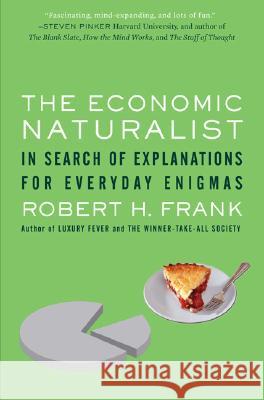The Economic Naturalist: In Search of Explanations for Everyday Enigmas » książka
The Economic Naturalist: In Search of Explanations for Everyday Enigmas
ISBN-13: 9780465003570 / Angielski / Miękka / 2008 / 240 str.
Why do the keypads on drive-up cash machines have Braille dots? Why are round-trip fares from Orlando to Kansas City higher than those from Kansas City to Orlando? For decades, Robert Frank has been asking his economics students to pose and answer questions like these as a way of learning how economic principles operate in the real world-which they do everywhere, all the time. Once you learn to think like an economist, all kinds of puzzling observations start to make sense. Drive-up ATM keypads have Braille dots because it's cheaper to make the same machine for both drive-up and walk-up locations. Travelers from Kansas City to Orlando pay less because they are usually price-sensitive tourists with many choices of destination, whereas travelers originating from Orlando typically choose Kansas City for specific family or business reasons. The Economic Naturalist employs basic economic principles to answer scores of intriguing questions from everyday life, and, along the way, introduces key ideas such as the cost-benefit principle, the "no cash on the table" principle, and the law of one price. This is as delightful and painless a way to learn fundamental economics as there is.











